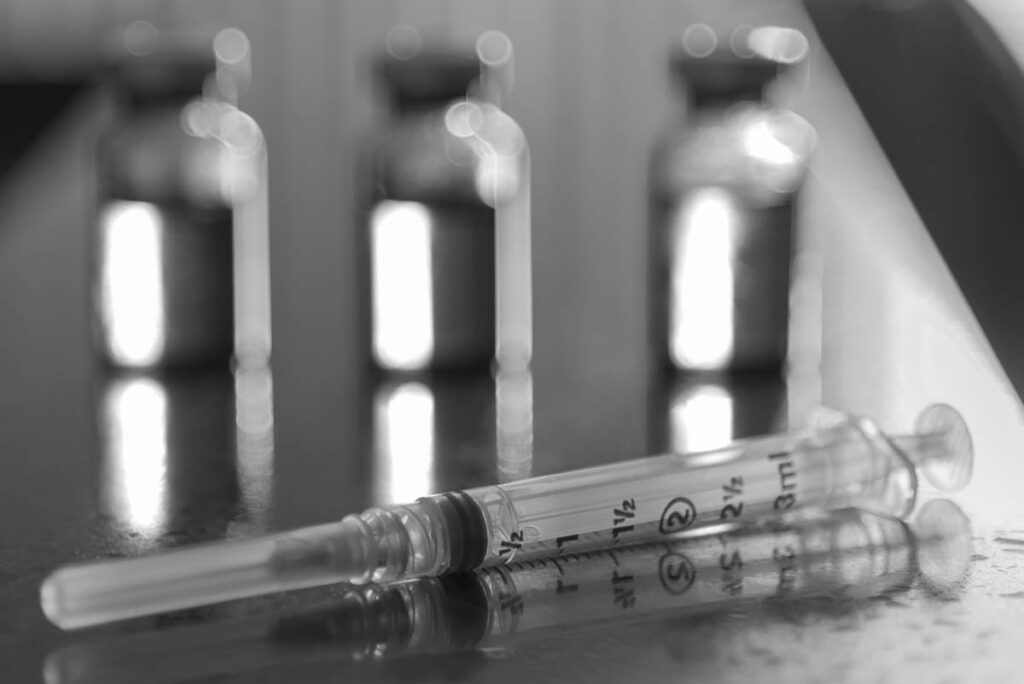Vial wastage in anesthesia contributes to hundreds of thousands of dollars in wasted anesthetic drugs each year. Anesthetic drugs that are stored in vials often go wasted because providers rarely use an entire vial during a single procedure. Prepared vials with leftover drugs and even untouched vials are discarded to prevent cross-contamination between patients (2). As a result, only a portion of the drugs stored in vials are actually utilized during a case. Decreasing the amount of vial wastage in anesthesia can help reduce the rising cost of medical care without compromising patient safety.
Of the top seven anesthetic drugs that are wasted in volume, over 50% of the drugs are unused. For example, a study of 98 cases in a general surgical OR in India found that nearly 100% of adrenaline was wasted (2). Anesthesiologists loaded adrenaline in 20 of the cases—presumably, in anticipation of intraoperative complications—and did not use the loaded adrenaline in any case (2). Similarly, lidocaine was loaded in 5 mL vials to administer to patients who were receiving propofol. However, only 1-2 mL of each 5 mL vial was ever used to prevent the pain of propofol injection (2).
Propofol is another common drug in anesthesia of which the majority counts as vial wastage. In a study of 164 cases at the University of Washington Medical Center, propofol was stored in 20 mL syringes and vials (3). However, providers did not use an average of 11 mL in each case, resulting in 55% of propofol wasted (3). Providers often prepared one or two 20 mL vials of propofol before each case, only to waste one or both of the vials (3).
Inhaled aesthetics, which are not stored in syringes and vials, also make a significant contribution to anesthetic drug wastage. The amount of inhaled anesthetics that is wasted is directly related to the type of circuit and the rate of fresh gas flow of the anesthesia machine (4). To illustrate, at a rate of 4.41 L/min of fresh gas flow, only 7% of desflurane is actually administered to the patient, meaning 93% goes wasted (4). Lowering the rate of gas flow to 1.01L/min significantly improves the efficiency of desflurane use to 23% (4).
Reducing vial wastage and drug waste overall in anesthesia requires individual and collective efforts in the operating room and hospital at-large. Storing anesthetic drugs in smaller quantities is an effective measure for increasing the percentage of loaded drugs that are actually used. For example, mixing lidocaine with propofol or loading just 1-2 mL in each syringe can drastically reduce lidocaine wastage (2). Similarly, providers can draw up propofol in “split doses” or multiple, smaller syringes to divide the contents of one vial or ampoule across multiple cases (2).
For emergency drugs such as adrenaline, surgical teams can keep ampoules near the anesthesia machines with saline-filled syringes for easy access, so that the drugs don’t need to be loaded up for each case (3). Stocking syringes instead of vials is also a helpful measure since vials tend to hold more drugs (3).
On an organizational level, education programs should be held every few months to inform junior members of surgical teams about the importance of reducing drug wastage (5). Visual reminders of drug prices when providers are determining if and how much of different drugs to load can help surgical teams be mindful of drug wastage (1).
References
- Aina, Titilopemi et al. “Decreasing Pharmaceutical Waste.” Society for Pediatric Anesthesia, pedsanesthesia.org/spa-one-pagers/decreasing-pharmacological-waste/
- Chaudhary, Kapil et al. “Anesthetic drug wastage in the operation room: A cause for concern.” Journal of anaesthesiology, clinical pharmacology vol. 28,1 (2012): 56-61. doi:10.4103/0970-9185.92438
- Dee, Hannah. “Drug and Material Wastage in Anesthesia Care.” The Georgetown Undergraduate Journal of Health Sciences, vol. 6, no. 2, 2012, pp. 4-8. https://blogs.commons.georgetown.edu/journal-of-health-sciences/files/Dee-2012-GUJHS-6-2-Drug-and-Material-Wastage-in-Anesthesia-Care.pdf
- Goyal, Rakhee, and Rohit Malhotra. “Inhaled anesthetics contributing to drug wastage.” Journal of anaesthesiology, clinical pharmacology vol. 28,3 (2012): 412-3. doi:10.4103/0970-9185.98378
- Kaniyil, Suvarna et al. “Financial Implications of Intravenous Anesthetic Drug Wastage in Operation Room.” Anesthesia, essays and researches vol. 11,2 (2017): 304-308. doi:10.4103/0259-1162.186596



